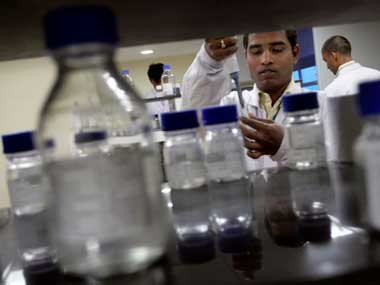Intranasal vaccines: What are they and how they can help against COVID-19

Bharat Biotech has received approval for Phase 3 clinical trials of its intranasal coronavirus booster dose from the Drugs Controller General of India (DCGI)
Bharat Biotech has received approval for phase-3 clinical trials of its intra-nasal COVID-19 booster dose from the Drugs Controller General of India (DCGI).
The company said on 28 January that the trials will evaluate its vaccine, BBV154, for both the two-dose primary schedule and booster dose schedule, which means the vaccine would be tested on people who have to receive both the doses as well as those who are awaiting booster doses.
The trials will be conducted on 900 subjects at nine locations across the country.
According to the Times of India, the DCGI has also given its approval to conduct phase-3 trials to compare the immunogenicity and safety of the nasal vaccine with Covaxin.
What is an intranasal vaccine, how it helps against COVID-19; here is all you need to know about Bharat Biotech’s nasal booster dose:
What is an intranasal vaccine
Vaccines are usually administered via different routes, depending upon the nature of the vaccine as well as the ailment. While the most common way of giving vaccines is into the muscle (intramuscular) or into the tissue between the skin and the muscle (subcutaneous), the intranasal vaccine is sprayed into the nostril and inhaled by the patient.
How does it work and why is it better
– When a vaccine is injected through the nose it also triggers another set of immune cells that are found in the tissue lining of the nose, mouth and lungs.
– Bharat Biotech has said that the nasal vaccine, BBV154, stimulates immune responses at the site of infection — the nose — and is very effective in blocking infection and transmission of Covid-19.
– While one type of immune cells, B-cells, in these areas can make antibody name IgA and help destroy any pathogens in the airway, the other type, T-cells, will be able to create a memory of the disease-causing element and will start a lifelong patrol of these areas where it first encountered the virus.
– Due to an intranasal vaccine, a virus can be neutralised even before it can affect the body, thus making it a preventive form of vaccine.
“Unlike other COVID-19 vaccines in development, this vaccine is delivered via the nose, often the initial site of infection. Researchers found that the nasal delivery route created a strong immune response throughout the body, but it was particularly effective in the nose and respiratory tract, preventing the infection from taking hold in the body,” Bharat Biotech had said in September 2020 while announcing its partnership with Washington University School of Medicine.
– Using an intranasal vaccine would also reduce the overall cost of the vaccination drive as there would be no need for needles and syringes anymore.
– Intranasal vaccines are also expected to cut down on the dependence on various trained personnel to administer the vaccine.
Any drawbacks?
According to the Indian Express, there is very little evidence for the effectiveness of the nasal route of delivery. Except for some flu vaccines, other attempts of vaccination haven’t been successful, according to experts.
“Despite the theoretical advantages, the intranasal approach for vaccination is largely unproven. While this concept has been tested quite extensively in animals, whether this holds true in humans is still largely untested and so the clinical trials here will definitely have to be watched closely,” said Dr Gill in an Indian Express report.
With inputs from agencies
Read all the Latest News, Trending News, Cricket News, Bollywood News,
India News and Entertainment News here. Follow us on Facebook, Twitter and Instagram.
For all the latest health News Click Here

